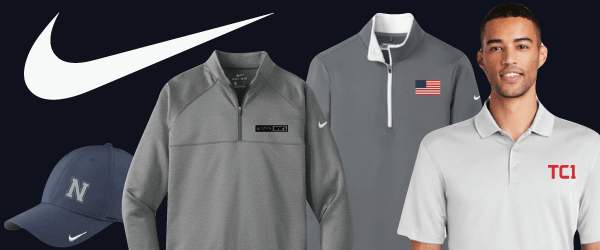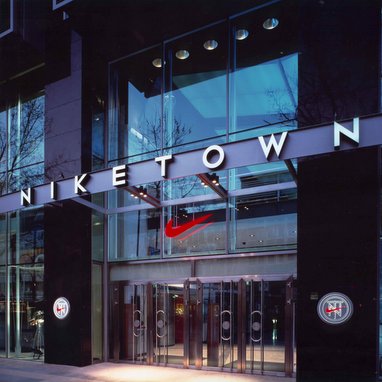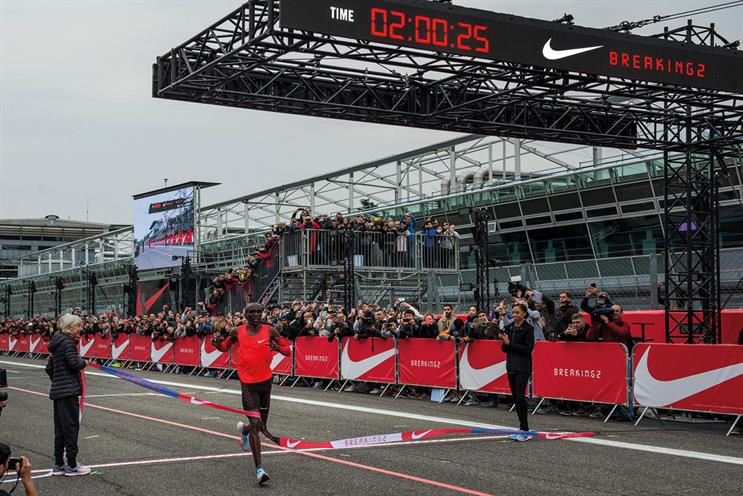
From past decade the sports industry continues to see an inflow of money from new sources because of shifting power dynamics in far-flung villages, towns and cities. Also, because of widespread use of emerging technologies and a greater focus on broader societal issues. In India, sports industry is becoming robust which explores newer trends and new opportunities and challenges for sports organizations, leagues, owners, teams, players, and fans. The Narendra Modi government is giving additional push to sports.
Globally the sports industry is massive which includes fitness, health, yoga and pure entertainment. Sports industry is getting more visibility because of digital media. It has a massive audience which is much diversified in terms of age, gender, geography, and society. The sports industry is a hyper-dynamic sector which is constantly changing and all of this is reflected in the marketing strategies used by this sector.
Marketing strategies involve the four Ps; the product can be a good or service, price includes what the consumer pays, place includes the locations where a product is marketed and distributed, and promotion includes advertising. The concept of the four Ps is age-old; it has been around since the 1950s. In mid-eighties, the four Ps were extended by another three Ps of marketing mix which includes the people, the processes and the physical evidences. These three components are also of great essence in marketing.
The term Marketing Mix was coined by Neil Borden who first started using the phrase in 1949. He said that the marketing manager blends the ingredients for an attractive offer of marketing mix. It was Jerome McCarthy, who in 1960 to suggest the four Ps of marketing. According to McCarthy the marketers fundamentally have the four variables which they use while crafting a marketing strategy and while preparing a marketing plan.
This article will discuss the four Ps of sports marketing. Sports market is growing globally from $354.96 billion in 2021 to $501.43 billion in 2022 at a compound annual growth rate of 41.3% CAGR (compounded annual growth rate). Overall employment of all marketing, advertising and promotions managers, including sports marketers, is projected to grow 6 per cent from 2019 to 2029, faster than the average for all occupations. Sports marketers will be needed to plan, direct, and coordinate advertising and promotional campaigns.
The marketing mix is very important to sports organizations. Each sports organization is going to utilize a different combination of these four P’s. Each one will have a different product, a different price, a different place, and different promotions to attract any given target segment irrelevant of whether the organization is domestic or international in nature. An organization can calibrate quality of product, extension of product, regulation, powering or increasing price. A well prepared marketing mix enhances the success of the product with benefits such as creating synergy which helps to create the right pitch for promotion. It enhances brand loyalty. It eases the decision making of brand managers to position the product rightly in customer’s mind.
To explain the four P’s of Sports Industry I will be giving example of Nike brand.

Product
The product is the heart of the marketing mix. All marketing activities begin with it. The product is not a physical entity alone; it captures the whole tangible and intangible aspects such as functional use, appearance, design, features, brand name, logo, quality packaging, ingredients etc.
Here, it is essential to understand the term product mix concerning marketing. The product mix is the whole range of products a company offers to its customers. For instance Nike majorly produces sports-related items and equipment. Nike focuses on producing a wide range of products and makes sure to maintain the mark of quality. The company designs different products for each kind of sport which makes its products comfortable for athletes including sports apparel. Nike has a wide range of sports equipment and accessories like bags, backpacks, balls, headbands and caps, and many more. The company has also teamed up with Apple for Nike+ products to track runner’s performance through running watches.
Nike produces different shoes for different purposes like running, golf, football, cricket, skateboards, tennis, cycling, and other sports too. They also sell casual footwear for non-athletes in vibrant colours which attract the youths. They manufacture different styles of sneakers according to men, women, and kids. Most importantly Nike’s focus is to constantly keep innovating design and develop products to improve athletic performance. Its overriding desire is to design products with true performance while using mix of innovation and technology. Nike makes sure that its consumers benefit and perform better.
Price
It’s the cost consumers pay for a product. It is the only P which generates revenue. Marketers must fix the price which suits the product’s real and supposed value. Marketers must consider supply costs, seasonal discounts, and competitors’ prices. In some cases, business executives may raise the price to give the product the appearance of being a luxury. Pricing decisions must be thoughtful process, as it is a double-edged sword. If a product is highly priced, it may project high quality and make the product’s positioning in limited and standard stores. So, the marketer must know the art of exercising this dangerous sword of pricing.
Nike uses value-based pricing and premium-based pricing strategy for their products. Nike does comparative study of its competitor’s product pricing while the company considers the current market price while setting the prices of products. Before setting up the prices, they measure what overall customers are willing to pay for a product. This value-based price strategy helps Nike to increase its profit over the time.
Premium-based pricing means pricing of premium products; Nike sets premium prices for its high-quality products. From time to time Nike has offered discounts on its products like “Easter sales” “Diwali Sale” on its online website and its stores, which helps them to attract new customers and retain the existing ones. They are also given the option to sign in and be the first ones to get any new arrivals.
The pricing decisions are based on policies and strategies. Also, the pricing decisions are based on allowances, discounts, rebates, credit policy etc. The pricing strategy of an organization must align with the organization’s mission, vision, goals etc.
Place/Distribution
Place in marketing mix refers to the market geographically located all over in a nation and in larger sense the globe. Marketing strategy depends on the market location. Where a company sells its products is important because the location must have the target customers.
Distribution decisions include elements such as channels of distribution, cost of warehousing, product handling, transportation, inventory control, order processing, reporting and billing.
Nike has 1000 plus shops all over the world and its offices are located in 45 countries outside the US. Most of the Nike products are sold in retail shops as many customers prefer to physically select the products by trying on sportswear. Retail stores are easily available in every city in multiple nations.

The company has its outlet named Niketown. These are the big hyper stores occupying 4or more floors with premium experience due to a variety of services. Niketown stores are fancy stores where new and emerging products are sold. Nike has recently reopened its flagship Niketown store on Oxford Circus Street in London following an extensive redevelopment. Helvar lighting (intelligent lighting) control has been used across the reportedly largest Nike store in the world just to deliver a creative and inspiring shopping environment. The Niketowns have a customization booth to offer services to individual customers as per their choice. It consists of professional zone where you can take advice for which product suits bone structure and body size of a customer. The customer’s shopping experience is made exclusive.
Nike products are also sold through their Online Nike store. They also sell through other online stores like Amazon, Flipkart, and Myntra. Nike spends handsomely on strengthening their distribution channels.
Promotion
In marketing, promotion refers to any type of marketing communication used to inform target audiences of the relative merits of a product, service, brand or issue, most of the time persuasive in nature. The other word for promotion is advertising. Advertising aims to serve two objectives. One is informing the potential customers about the product and second it creates a desire in them to buy the product. The promotion mix thus includes the various means that an organization uses to communicate with the target audience. An effective promotion ensures good sales and a marketer must strive to create a conducive environment.
The promotional mix includes advertising, personal selling, public relations, direct marketing, social media, print media, outdoor media etc.
Nike’s main source of promotion is sponsoring sports events. The company does advertisements involving high-profile celebrities and athletes of different countries. Some celebrities that promote Nike’s products are Serena Williams, Christiano Ronaldo, Mo Farah, Kunal Rajput, Rafael Nadal, and LeBron James. It also Sponsors the sports teams like cricket, NFL, FIFA World Cup, Tour de France Cycling, Rugby World Cup, and NBA. Nike’s new ad brilliantly showcases the unstoppable spirit of women in India. The video features top Indian sportswomen along with Bollywood beauty Deepika Padukone.
Nike does direct marketing by personal communication with organizations such as universities, schools, colleges, and local sports teams. They also give time to time discounts and great offers to their loyal customers and to woo new ones they use promotional tactics. They give financial support to the NGOs to make public relations strong and able to promote their products through it. Nike’s target audience is fitness-centric, elite class, and sports enthusiastic people especially youngsters. Nike also promotes its products through social media by connecting with millions of people and interacting with them through Instagram, Twitter, Facebook, and YouTube. Nike’s “Just Do It” campaign launched in 1988 motivated millions of people to do their job efficiently. Till date, this slogan is a trademark of Nike. The company’s Latest campaign hashtag #YouCantStopUs tells us that every sports field is equal which has gone viral on social media. Nike does such inspiring campaigns of different themes from time to time and gains trust of their customers.

Sports event sponsorship
Lot of sports companies sponsor sports events to add value to the brand. In almost all sports events there is intense competition among companies and brands. Often there is little to choose from in terms of quality, content or price. In order to make a brand stand out from the crowd a sponsor choses sport to create a unique position in the mind of the consumer. At the highest levels, sport involves gold medals, world records and global awareness. Through sponsorship sports companies gain a big mileage. Companies use sports sponsorship for a variety of reasons, and to attract sponsorship it is important to understand which objective a company is seeking.
Sports companies seek to get media coverage. Sporting events create opportunities for exciting newspaper photographs and television images showing sponsor logos on shirts or banners. Such exposure creates brand awareness making its logo stand out from competitors. The sponsor gets more benefit through activities that are enjoyable and memorable and provides opportunity to build customer mindshare. The sponsorship provides an opportunity to communicate with the customer in the setting where he is enjoying a quality time, leisure time and experience.
Big brands such as Pepsi, Puma, Adidas, Nike, Red Bull, Coca Cola, and Reebok are famous for sponsoring events. They have contributed a lot of money and effort to sponsor campaigns for teams around the world.













































